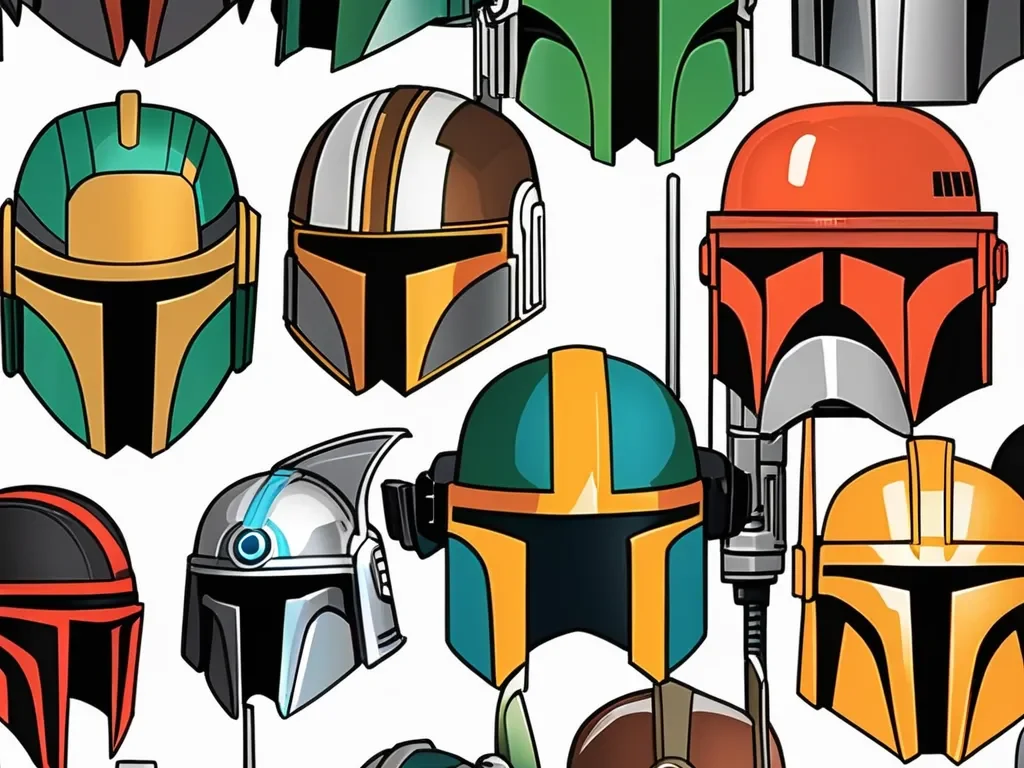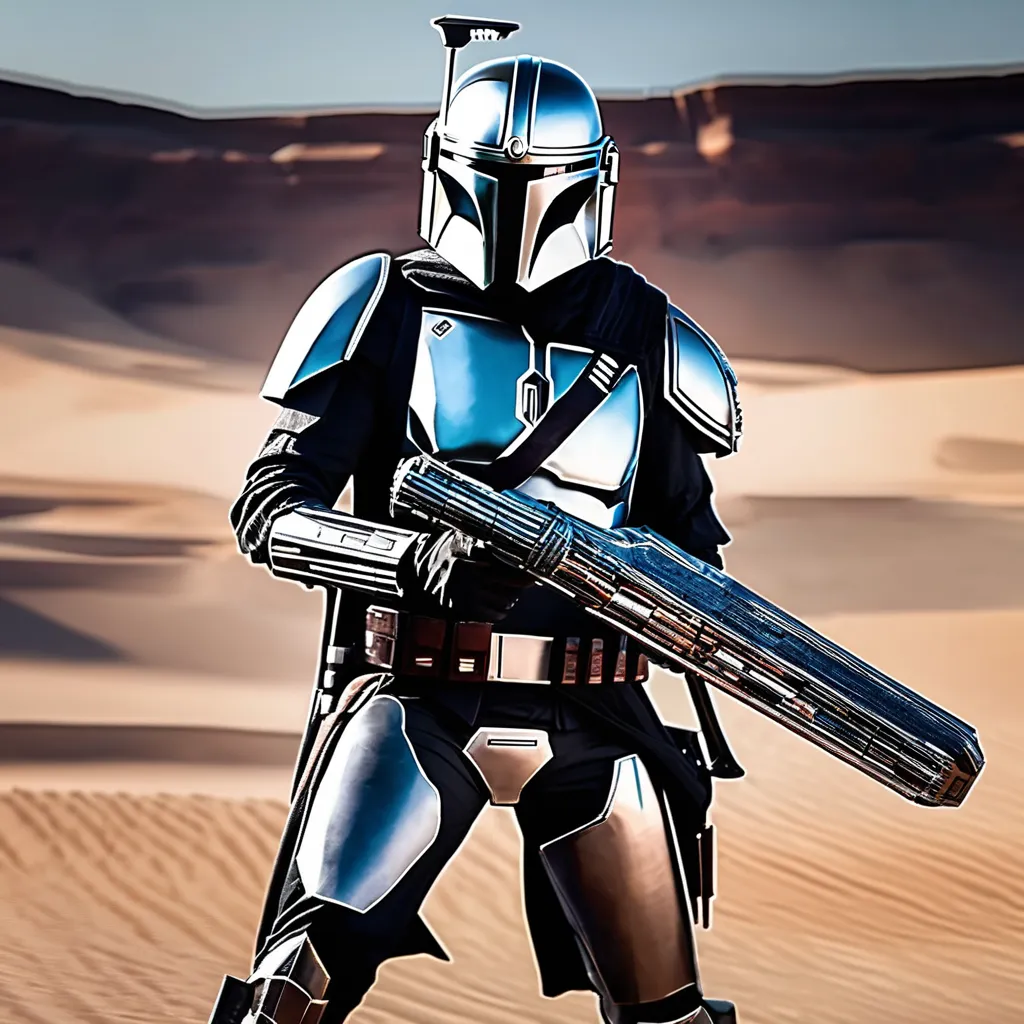Mandalorians have become one of the most iconic and mysterious groups within the Star Wars universe, capturing the imaginations of fans worldwide. With their striking armour, rich history, and strict codes of honour, Mandalorians stand apart from the Jedi and Sith, offering a fascinating look into a warrior culture deeply rooted in tradition. In this blog post, we’ll take a deep dive into Mandalorian culture—from their origins to their impact on the Star Wars galaxy—and explore what makes them such a captivating part of the lore.
What to expect

1. The Origins of Mandalorian Culture
The Mandalorians originated on the planet Mandalore in the Outer Rim Territories. Unlike the Jedi, who seek peace, Mandalorian culture is built around conflict, war, and survival. Mandalorians began as a group of warriors who sought conquest and power across the galaxy. Their early history is marked by wars, including clashes with the Jedi Order. In fact, much of Mandalorian technology, including their advanced armour, was designed to counteract the abilities of the Jedi.
Mandalorians are not a race but a creed, meaning anyone who follows their strict warrior code can become a Mandalorian, regardless of species or origin. This inclusivity allows their culture to grow stronger through shared values rather than bloodlines.
- Explore the Mandalorian Collection: The Mandalorian Collection – (https://amzn.to/3ZnxRbm)
2. Mandalorian Armour: A Symbol of Strength and Identity
Mandalorian armour is one of the most recognisable aspects of their culture. Made from beskar, a nearly indestructible metal, the armour is designed not only to protect but also to represent the wearer’s identity. Each Mandalorian’s armour is unique, often passed down through generations, and is customised to reflect personal achievements and family heritage.
Beskar armour is impervious to lightsabers, giving Mandalorians an edge in combat against Jedi. The iconic T-shaped visor of their helmets is a symbol of strength and fearlessness, instilling a sense of awe in both allies and enemies alike.
In Mandalorian culture, removing one’s helmet is forbidden, as it signifies the relinquishing of their warrior identity. This strict adherence to tradition is famously seen in The Mandalorian series, where Din Djarin’s refusal to remove his helmet becomes a key element of his character.
- Own your own Mandalorian helmet: The Mandalorian Helmet Replica – (https://amzn.to/3TrMsyO)

3. The Way of the Mandalore: Honour and Code
Central to Mandalorian culture is “The Way of the Mandalore”, a strict code of honour that dictates the behaviour and decisions of its followers. Mandalorians believe deeply in loyalty, strength, and self-reliance. Much like the Jedi follow the Force, Mandalorians follow this code with unwavering dedication.
Some of the key tenets of Mandalorian culture include:
- Loyalty to one’s clan and tribe: Clan ties are sacred, and Mandalorians are bound to protect their families and fellow warriors.
- Adoption: Mandalorians often adopt foundlings (orphaned children), raising them as one of their own. This practice further highlights the inclusivity of Mandalorian culture.
- Honour in combat: Mandalorians are skilled warriors, and combat is not just a necessity but an art. Their honour is linked to their performance on the battlefield.
This code also highlights the Mandalorian’s respect for life and the importance of survival in harsh environments. Whether fighting for their home world or standing up for their tribe, Mandalorians carry their honour and duty with them at all times.
- For more insights into Mandalorian culture and honour: This Is The Way – (https://amzn.to/3B48gua)
4. The Darksaber: A Symbol of Leadership
One of the most important symbols in Mandalorian culture is the Darksaber, a unique lightsaber created by Tarre Vizsla, the first Mandalorian Jedi. Unlike traditional lightsabers, the Darksaber has a flat, black blade and serves as a symbol of leadership within Mandalorian society. Whoever wields the Darksaber holds the right to rule Mandalore.
The Darksaber has been passed down through generations, often becoming the centre of power struggles. In The Mandalorian series, it plays a crucial role in the conflict between Din Djarin, Bo-Katan Kryze, and the future of Mandalore. The weapon represents more than just power—it embodies the destiny and unity of the Mandalorian people.
- Get your own Darksaber replica: Mandalorian Darksaber – (https://amzn.to/3XoPJ39)

5. The Fall and Rise of Mandalore
Mandalore’s history is one of rise and fall. After centuries of warfare, the once-powerful planet of Mandalore was devastated by internal conflict and attacks from the Empire. Following the events of Star Wars: The Clone Wars, Mandalore fell under Imperial rule, leading to the near destruction of its people and culture.
Despite their losses, Mandalorians remain resilient. The events of The Mandalorian series explore the fragmented state of Mandalorian culture, as clans and tribes struggle to survive in the galaxy. Characters like Din Djarin, Bo-Katan, and others represent the hope of a united Mandalore, with the Darksaber symbolising the potential to rebuild and reclaim their warrior heritage.
The Mandalorian creed teaches survival through strength, and even though their home world has suffered greatly, Mandalorians continue to fight for their legacy and future.
- Learn more about the Mandalorian: The Mandalorian: Guide to Season One – (https://amzn.to/3XL4ttx)
Mandalorian culture is one of the richest and most intriguing aspects of the Star Wars universe. From their warrior creed and beskar armour to their fierce loyalty and complex history, the Mandalorians represent a unique blend of tradition, strength, and survival. As the Star Wars saga continues, so does the story of Mandalore and its people—one of resilience, honour, and the eternal fight to protect their way of life. Read more about the Mandalorian here: Unleashing the Epic Mandalorian Mystique: Heritage, Homeworlds, and Galactic Adventures
If you’re as fascinated by the Mandalorian culture as we are, be sure to check out the links above for detailed books, replicas, and collectibles that let you bring a piece of Mandalore into your own home. Whether you want to display the Darksaber or don your own Mandalorian armour, there’s something for every fan.
—
Disclosure: This post contains affiliate links. If you use these links to buy something, we may earn a commission at no additional cost to you.
